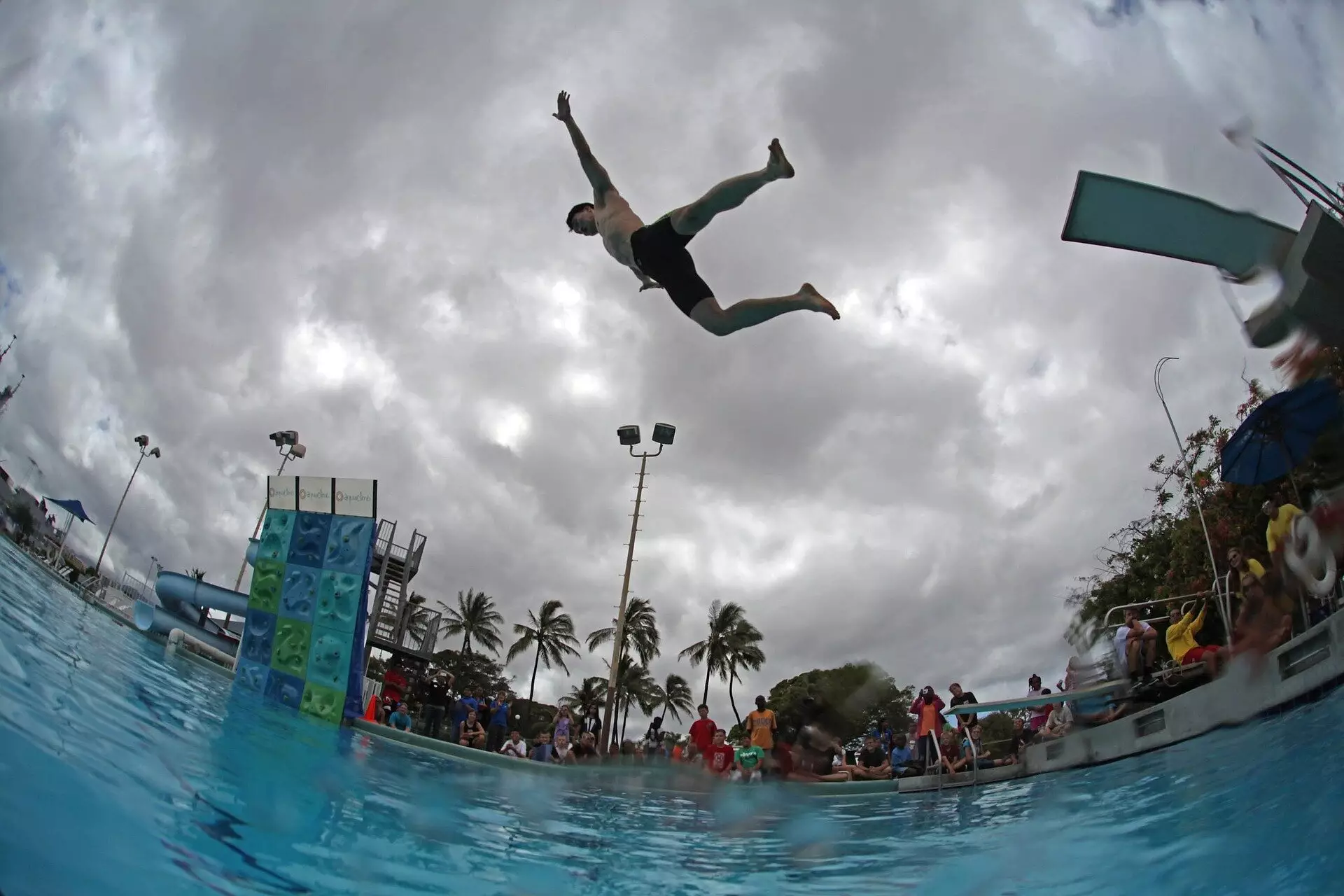When someone performs a belly flop into a swimming pool, the result is a loud splat, a huge splash, and a painful sting. But have you ever wondered why belly flops are so painful? According to Daniel Harris, an assistant professor in Brown University’s School of Engineering, the physics behind belly flops are not as complex as they may seem. The reason for the pain is the intense resistance from the water surface when the body suddenly transitions from air to water. As Harris explains, the water has to accelerate to match the speed of the falling body, resulting in a large reaction force that leads to the signature slam and painful experience.
The study of belly flops and the underlying fluid mechanics is not just important for winning belly flop competitions or trivia. It also has critical applications in naval and marine engineering. Structures in these fields often need to withstand high-impact air-to-water slamming forces. Therefore, researchers have been studying this phenomenon for over a century. A research team led by Daniel Harris and graduate student John Antolik conducted a new study in collaboration with scholars at the Naval Undersea Warfare Center and Brigham Young University. Their goal was to gain novel insights into the mechanics of belly flops.
Previous research focused on rigid bodies slamming into water, without considering the potential role of flexibility. To address this gap, the researchers attached a soft “nose” to the body of their cylinder, which acted as an impactor. This flexible system was equipped with a system of springs, similar to a car’s suspension, to distribute the impact load over a longer period. The experiment involved repeatedly dropping the cylinder into still water while analyzing both the visual results and data from embedded sensors.
Unexpected Findings
The results of the study challenged conventional thinking. Contrary to expectations, the more flexible system did not always soften the impact. In some cases, it actually increased the maximum impact force on the body compared to a fully rigid structure. To understand this unexpected result, the researchers conducted extensive experiments and developed a theoretical model. They found that the height from which the impactor was dropped and the stiffness of the springs played a crucial role. The body not only experienced the impact from the slam but also the vibrations of the structure entering the water. This compounded the slamming force and could potentially worsen the situation if not timed correctly.
The researchers discovered that the key to optimizing the impact was finding a balance with the springs. The springs needed to be soft enough to absorb the impact without causing excessive vibrations that added to the overall force. Through high-speed camera recordings and the use of an accelerometer, the researchers carefully studied the experiments. They realized that timing was crucial for achieving the desired outcome. By understanding the dynamics of the vibrating structure, they could minimize the impact force and improve the overall performance.
Inspired by diving birds, the researchers are now exploring next steps in their research. Birds that dive into water perform certain maneuvers to mitigate the high forces they experience. By studying these biological mechanisms, the research team hopes to gain further insights into improving the conditions for structures experiencing high-impact air-to-water forces. This interdisciplinary approach could lead to innovative solutions in naval and marine engineering.
Understanding the physics behind belly flops provides valuable insights into fluid mechanics and its applications in various fields. The recent study conducted by Daniel Harris and John Antolik shed light on the effects of flexibility in impacting structures, challenging conventional thinking. By finding the right balance with flexible springs, engineers may be able to minimize the impact force and improve the performance of structures subject to air-to-water slamming forces. The research team’s future investigations, inspired by diving birds, offer exciting possibilities for advancements in naval and marine engineering.


Leave a Reply